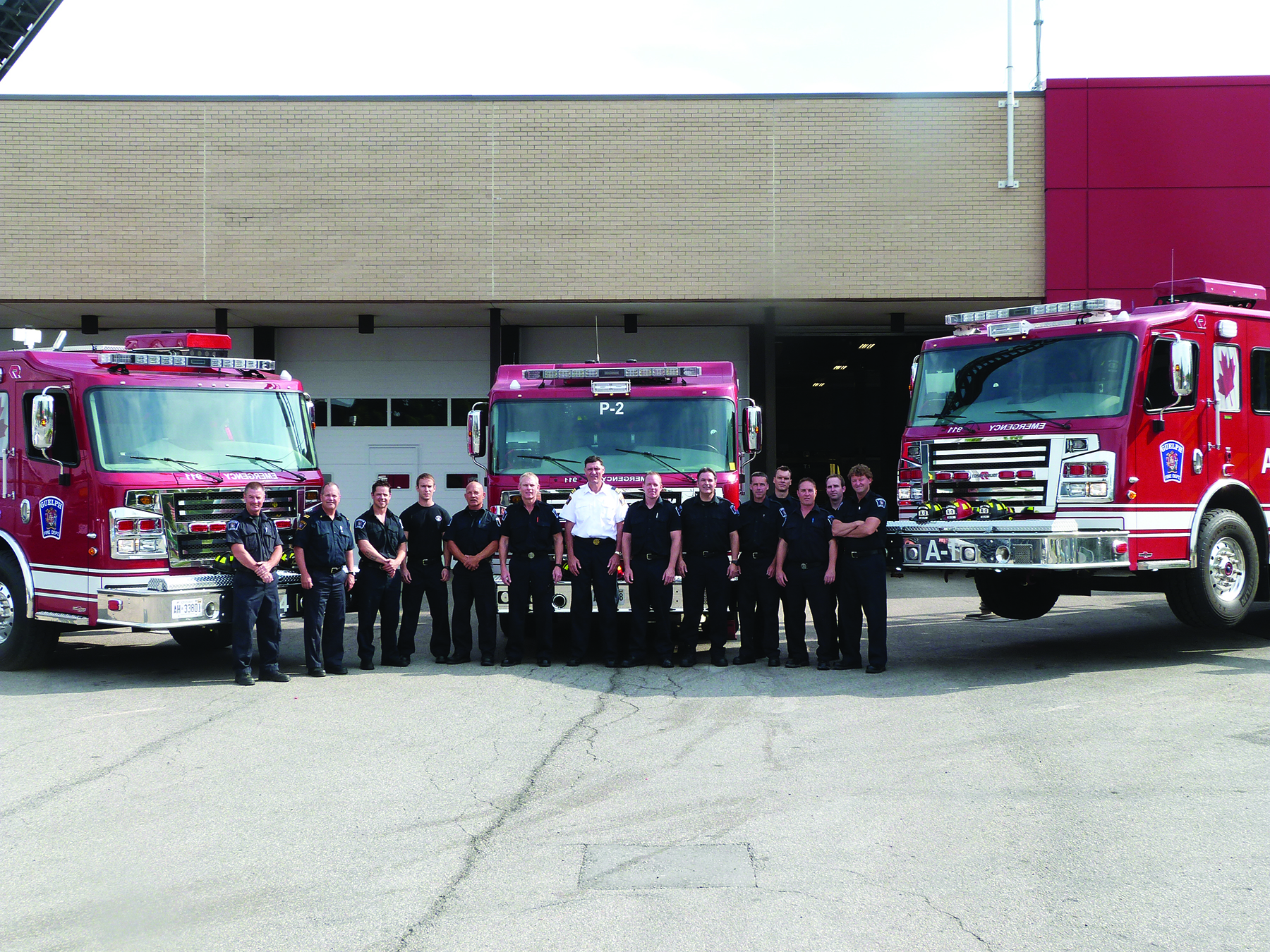The city of Guelph is a vibrant community situated in the heart of southern Ontario, just 60 miles west of Toronto. Supported by the University of Guelph and a diverse variety of manufacturing, service and high-tech enterprises, Guelph is one of the fastest growing economic regions in Canada.
Deputy Chief John Osborne of the Guelph Fire Department (GFD) is part of a crew that numbers 165, all entrusted with protecting Guelph’s 140,000 residents. Led by Chief Shawn Armstrong, the department operates from six fire halls.medium05
Accreditation counts
In 2011 the GFD officially became an accredited agency from the US-based Commission on Fire Accreditation International (CFAI), being the 4th in Canada and the 2nd in Ontario to achieve this goal.
The significance of this recognition—a process that took months of preparation and required a unanimous vote before CFAI Commission Members—demonstrates a commitment to continuous improvement.
“Participation in this process ensures that we’re always in compliance with achieving what we say we’re capable of achieving,” says Osborne. “The process also holds us to a higher standard in the overall operations of our department.”This enables the GFD to provide measurable service at levels to meet the varied needs and circumstances of the community.
Equipment that performs
High standards are also important when it comes to fire apparatus. During Osborne’s 25 years with GFD (21 as a firefighter), the department has purchased vehicles and equipment from dealer ResQtech for most of his tenure. Their fleet consists of 11 front line first response vehicles. Of these vehicles, six are Rosenbauers. A pumper, T-Rex and Raptor were built on the recently introduced Rosenbauer cab and chassis. There is another Raptor slated for the 2016 budget. The GFD is one of the first fire departments with an operational Rosenbauer cab and chassis body.
Osborne says they’re a strong proponent of the Commander chassis. “We’d been involved in the review of their prototype. They flew us to Texas into a test track to give our opinion of the truck. We gave quite a few suggestions and most of those were made operational. The chassis allows us to design a cab that suits our specific needs, including an air flow that helps keep the cab cool at all times.”
More innovation
GFD is one of the first fire departments in North America to use lithium battery technology. They were eager to try the technology on two of their newer trucks as many of their calls are non-fire related emergencies that requires the vehicles to idle. This idling creates a buildup of exhaust contaminates, causing the engine to regenerate to burn these contaminates. The process is time-consuming and Osborne feels by limiting idling time this process is decreased, consequently saving time and fuel.
Downtime is not an option when dealing with as many as 7,000 calls each year—from fire, medical, confined space and hazmat to both water and ice rescue.
With lithium technology, idling is no longer a concern. If the truck isn’t set up for a fire scene, the truck turns itself off after one minute while the air conditioning, heating, lights and radios continue to operate. When the truck amperage drops to a certain level, the system automatically re-starts the truck, charges it and then shuts it off again.large05
Lasting trucks, lasting relationships
Specific needs are vital when ordering features. Along with lithium battery technology, the GFD wanted an improved body construction with a long warranty.
“Our pumpers are on a 15-year replacement cycle,” Osborne says, “so we require trucks that last and won’t require significant repairs in the last third of their life span.” Several of their trucks prior to Rosenbauer required considerable body work, welding and maintenance after eight or nine years. Their oldest two Rosenbauer trucks are approaching age 10, and neither show signs that require these repairs. “Our mechanical division inspects them rigorously,” he adds, “looking for problems. The vehicles haven’t cost us on repairs as compared with other brands we’ve purchased in the past. Because of our expected life cycle of the units, durability is important.”
For Osborne, favorite features on Rosenbauer products are body construction, cab layout, air conditioning capabilities and overall appearance. Another key aspect is working with a dealer that always provides the desired standard of service.
Osborne explains that after completing their research, he and his vehicle purchasing committee— made up of members from the mechanical, training and suppression divisions—were continually impressed with the Rosenbauer body.
Over the years, Osborne feels that dealing with Rosenbauer has been a partnership. “We were asked for input during the first release of their bodies and together we overcame some of the identified issues. They were easy to talk with and we felt our concerns were addressed.”
The Guelph Fire Department has faithfully served the community full-time for over 100 years, working each day to make a difference. Rosenbauer hopes to be part of their present and their future success. Stay connected with GFD at Twitter @GuelphFire.



